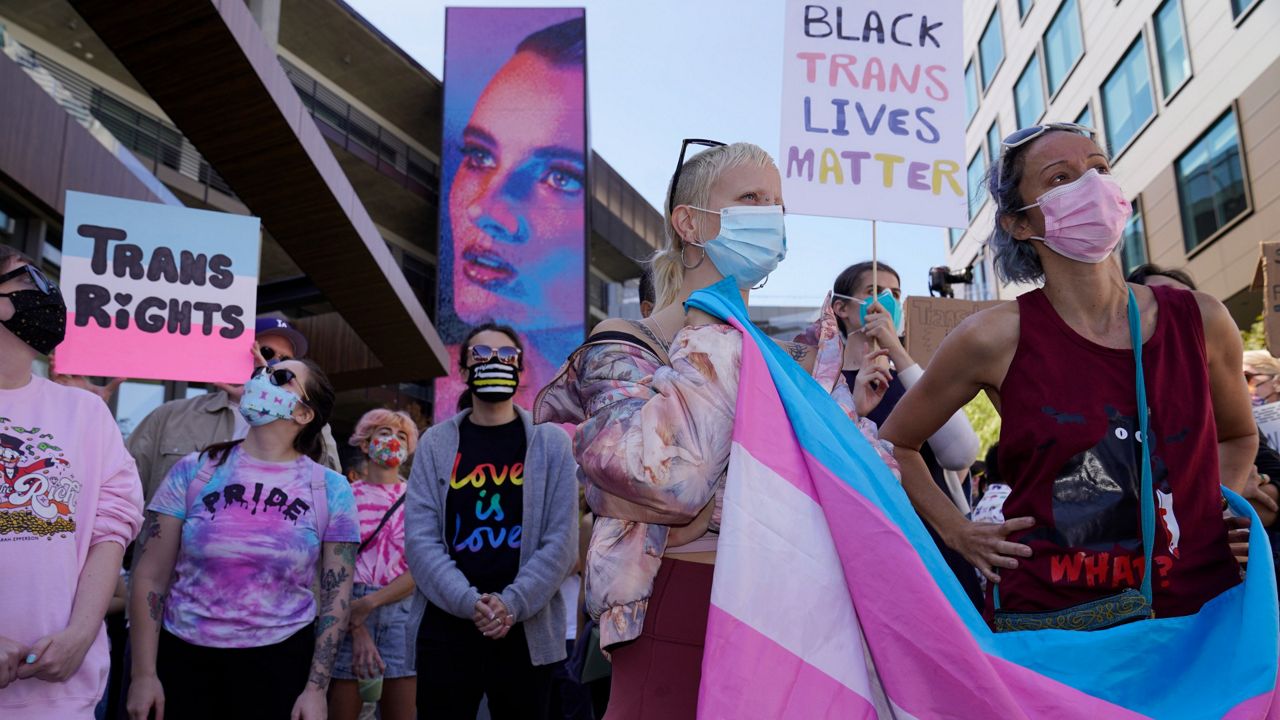The number of teenagers and young adults in the United States who identify as transgender has doubled in the past five years, according to a new study.
What You Need To Know
- The number of teenagers and young adults in the United States who identify as transgender has doubled in the past five years, according to a new study
- The UCLA School of Law's Williams Institute published a study Friday estimating there are 1.6 million transgender people 13 and older in the U.S.
- The study found that 1.4% of 13- to 17-year-olds and 1.3% of 18- to 24-year-olds identify as transgender; five years ago, both of those numbers stood at 0.7%
- Overall, the Williams Institute found that the percentage of adults who identify as transgender has remained steady at 0.6% since its last report in 2017
The UCLA School of Law's Williams Institute, a think tank that conducts research on sexual orientation and gender identity law and public policy, published a study Friday estimating there are 1.6 million transgender people 13 and older in the U.S.
The analysis is based on health survey data from the Centers for Disease Control and Prevention from 2017 to 2020 as well as statistical modeling.
Overall, the Williams Institute found that the percentage of adults who identify as transgender has remained steady at 0.6% since its last report in 2017, but there has been a sharp rise in transgender people ages 13 to 24.
The study found that 1.4% of 13- to 17-year-olds and 1.3% of 18- to 24-year-olds identify as transgender. Five years ago, both of those numbers stood at 0.7%. Together, the two groups are estimated to account for nearly 700,000 people.
Jody Herman, the paper’s lead author, told Spectrum News there are several reasons for the jump in the youth transgender population estimate, including that the CDC’s Youth Risk Behavior Survey began asking high school students in 2017 if they are transgender, giving researchers a clearer picture.
Herman, a senior scholar of public policy, said other factors likely include shifting populations, greater awareness and education about trans people and gender identities, and increased social media that allows young people to connect with people they relate to.
“I think it's a combination of things,” she said. “And we should be suspect of pointing at one thing.”
The percentage of young transgender people is disproporniately large compared to the general population. Thirteen to 17-year-olds make up 8% of the U.S. population but account for 18% of transgender people, the report said. Eighteen to 24-year-olds comprise 11% of the overall population but are estimated to be 24% of the transgender community.
Older adults, meanwhile, make up a disproportionately small segment of the transgender population. Twenty-five to 64-year-olds account for 62% of the U.S. population, but 47% of transgender people. Individuals 65 and older are nearly 20% of all Americans, but 10.5% of transgender people.
Among people ages 25 to 64, 0.5% identify as transgender, and 0.3% of individuals 65 and older are transgender.
Of the states for which data was available, New York had the highest percentage of youths who identify as transgender (3%), while New Jersey had the lowest (0.67%). North Carolina had the highest percentage among all adults who are transgender (0.87%), while West Virginia had the lowest (0.4%).
Thirty-nine percent of adults identify as transgender women, 36% are transgender men, and 26% said they are gender nonconfirming, the study said.
The estimates come during a year when many state legislatures have introduced bills targeting transgender people. According to the Human Rights Campaign, more than 130 anti-trans state laws have been proposed in 2022.
Herman said it’s important to remember that trans people live in every state.
“We should keep that in mind when we're thinking about the policy landscape and things that might affect trans people,” she said. “Things like that will have an impact on real people, and these numbers represent real people.”



